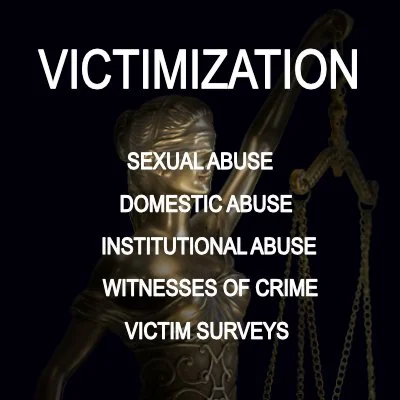By Karen L. Schucan Bird, Nicola Stokes, Carol Rivas
Background: Domestic Violence and Abuse (DVA) is a significant global problem that warrants a robust, multi‐sectoral response. The Covid‐19 pandemic highlighted that informal and social networks play a critical role in responding to victim‐survivors, alongside formal agencies and specialist services. Friends, relatives, neighbours and colleagues are uniquely placed to recognise abuse, respond and refer to wider services, where appropriate. Seeking to harness this potential, interventions tailored towards such informal supporters are being developed and implemented around the world. Yet little is known about such interventions. By pulling together the research on such programmes, this evidence and gap map begins to advance the understanding of informal support interventions, pinpointing the range and type of interventions implemented around the world, and the extent of the available evidence. This provides valuable insights for policy makers and practitioners seeking to commission or develop interventions and research in this area, with a view to facilitating a holistic, societal‐wide response to domestic abuse. The evidence and gap map was a collaboration of academics and specialists, as well as domestic abuse researchers, with input and guidance from an Advisory Group.Objectives: This evidence and gap map aims to establish the nature and extent of the empirical primary research on interventions aiming to create or enhance informal support for victim‐survivors of domestic abuse, identifying clusters of evidence potentially suitable for synthesis, and gaps in the research base.Search Methods: The following bibliographic databases were searched for published studies from inception to 31st October2022: APA PsycINFO, Social Policy and Practice, ASSIA, PubMed, and Social Science Citation Index. Identifying grey literature was an important pillar of the search strategy and so websites of domestic abuse organisations, predominantly in the United Kingdom, were also searched. Similarly, a targeted search of specialist systematic review, policy and domestic abuse database was undertaken from inception to 10th July 2023.Selection Criteria: The evidence and gap map focused on any interventions that explicitly aimed to create or enhance informal social support for victim‐survivors of domestic abuse. Eligible interventions targeted the providers of the support (i.e., friends,relatives, neighbours or colleagues), the victim‐survivor, the relationship between them, and/or the wider community within which the informal support was provided. All study designs were included, reporting qualitative or quantitative data for samplesor victim‐survivors (adults who were/had been experiencing abuse in an intimate relationship) or informal supporters.Outcomes were not used as part of the eligibility criteria. Eligible studies needed to be published in English. Collection and Analysis: All studies included in the evidence and gap map were coded by two independent reviewers,using specialist systematic review software EPPI Reviewer. Details were collected about the study sample, study design,intervention and outcomes. Quality appraisal was not undertaken.Main Results: The EGM identified 47 primary studies of interventions that aimed to create, enhance or facilitate informal support for victim‐survivors of domestic violence and abuse. The overwhelming majority of evidence is drawn from the GlobalNorth, and there is dissonance between the small evidence base and the relatively larger number of informal support interventions implemented around the world. The EGM highlights the importance of diverse study designs and grey literature in this field. The body of research is unevenly distributed, with the greatest concentration of studies around interventions directed towards victim‐survivors, such as support groups or mentoring, and those tailored towards informal supporters, such as education and training. Most research reported on female, adult victim‐survivors with a particular emphasis on their mental health and wellbeing, and their help‐seeking behaviours. The reporting of such outcomes aligns with wider service user/provider priorities and highlights the imperative of DVA research to improve the lives of victim‐survivors. The EGM found little research focused on interventions targeting structural factors that shape informal support, such as social relationships or community norms, and a lack of data on specific population groups including victim‐survivors in the longer term, ethnic minority groups and men. There are major gaps in the research for informal supporters with limited data or outcomes for this group, and specific types of informal supporters (namely friends and family members) are notably absent from samples. TheEGM also highlights a gap in the research on community‐level outcomes.Authors' Conclusions: To our knowledge, this EGM is the first to provide a comprehensive and rigorous overview of the evidence on informal support interventions in domestic abuse. The EGM provides a valuable tool for policymakers, practi-tioners and researchers seeking to navigate the evidence around such interventions. Whilst the EGM provides a partial picture of interventions around the world, the studies offer insight into informal support for victim‐survivors of DVA and the potential effects of intervening. The suite of interventions covered by the EGM can inspire policymakers to broaden the response to domestic abuse beyond frontline services, identify stakeholders and commission pilot studies to further understanding of informal support interventions. The evidence base can be strengthened with additional studies examining interventions that target relationships and communities, as well as individuals, and assessing a wider range of population groups. At the sametime, the EGM offers pockets of rich data, such as outcomes on victim‐survivor mental health or interventions in faith‐basedorganisations, which can be utilised to inform current and future service provision.
Campbell Systematic Reviews, Volume 21, Issue 2, 2025; 48p.


















